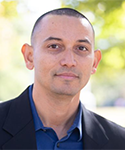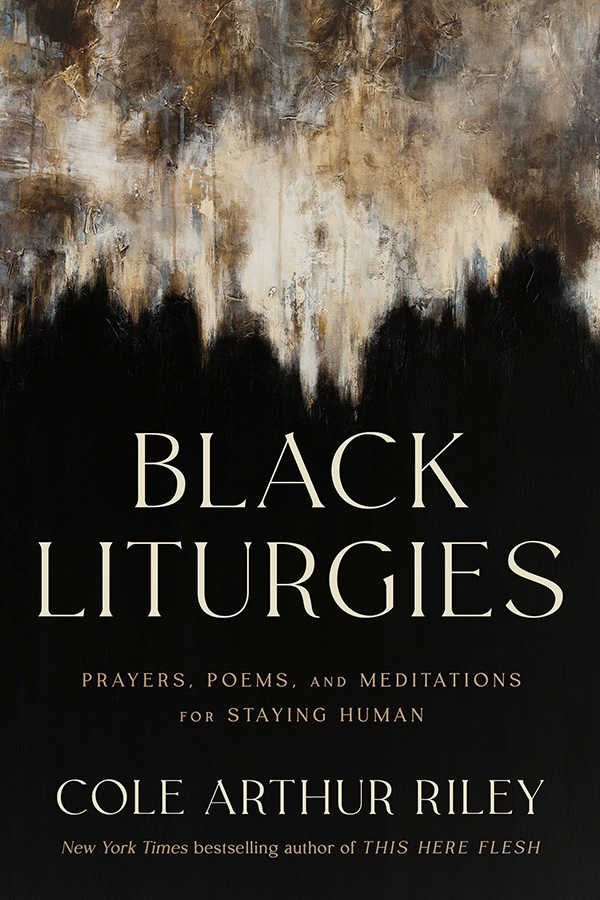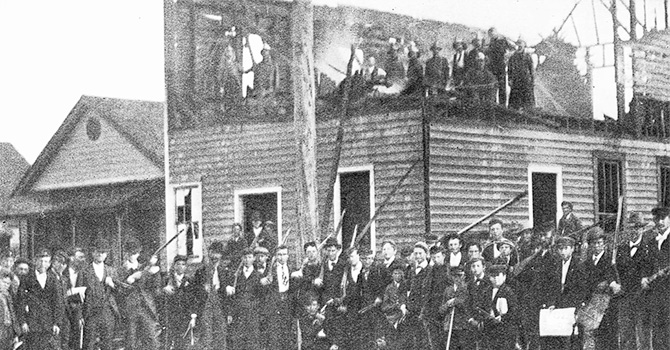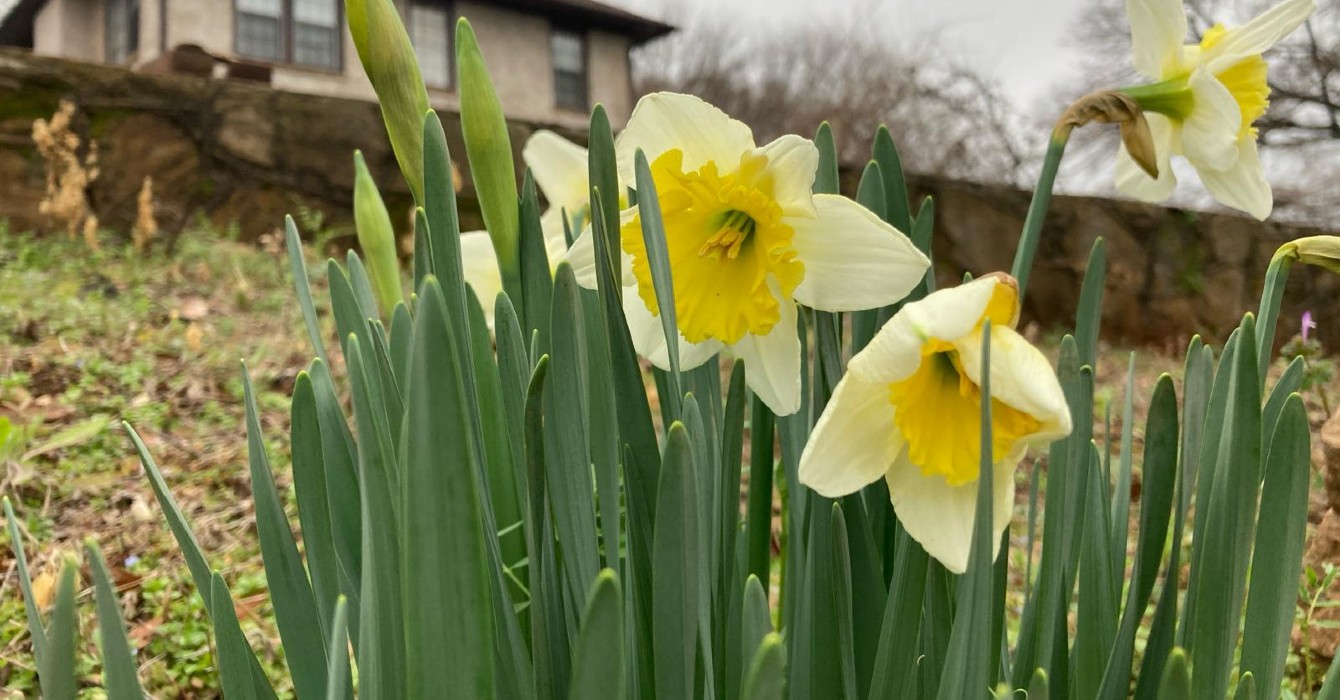Standing Rock Sioux Reservation is not officially part of the Rev. David M. Wilson’s territory.
A member of the Choctaw Nation, Wilson is the conference superintendent of the Oklahoma Indian Missionary Conference of the United Methodist Church, headquartered in Oklahoma City.
But as a Native American and as a Christian, he felt a duty to support the Native Americans protesting the construction of the Dakota Access Pipeline.
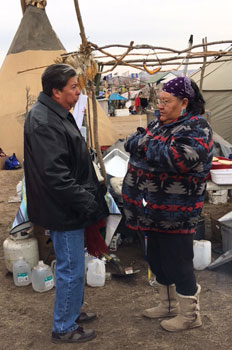
one of the head cooks at the Oceti Sakowin
camp, part of the Standing Rock protest.
“To see such a diverse group of people, native people, at the camp, representing so many tribes who are all so different -- here we are, all gathered together to support one another in this way,” Wilson said. “That was moving for me. And every time we left, we hated to leave.”
In April 2016, a small prayer group started to protest the pipeline, built to move half a million barrels of oil a day beneath the Missouri River, the main source of drinking water for the reservation.
By the summer, thousands of protestors had gathered at the site. The last were cleared out of the camp by law enforcement in February. The pipeline was finished and oil has been flowing since June 1, despite protests and legal challenges by American Indian tribes.
For Wilson, involvement in Standing Rock was a witness both of the church and to the church.
“I tell folks often one of my tasks was to remind the church of those promises that they made that we sometimes like to forget about,” he said. “The promise was made to help native peoples everywhere. That was important for me, too, to be involved with all of this.”
The Oklahoma Indian Missionary Conference dates back to the time of the Trail of Tears, when Native Americans were forced to move to Indian Territory. It is unusual in that the conference’s leadership, as well as its membership, is primarily composed of native people. It comprises 6,000 people in 84 churches and five fellowships.
Wilson spoke to Faith & Leadership about the significance of the Standing Rock protest. The following is an edited transcript.
Q: How did you get involved at Standing Rock?
We only work within the geographical areas of Oklahoma, Kansas, Texas and Missouri, [but] we often get called to speak or be a voice for other events happening across the country related to native people.
We first heard about Standing Rock, early on, mostly via social media. The Indigenous Environmental Network was asking folks to come and see what was going on. So we went to see for ourselves and got to visit the campsites. And I knew a couple of folks there. About every month after that, we were up there.
That’s in addition to doing my day job that I get paid to do. But this is so important -- to get the help to people, and to show up, and the leaders we get to see. They know the commitment we’re making to bring people there.
We brought one of our churches down one weekend [in the winter] to help feed them, and when we were there, here comes a blizzard, and we got to feed only one day. It was probably 5 degrees. We were snowed in at the hotel, barely got home. It was just crazy, crazy weather every time we turned around.
And here’s those people out there camping, making the best of it, and doing it because they were fighting for a cause, and they believed in this cause of protecting water.
When I’d come home, people knew I was up there, mostly because of social media, and they’d all want to hear about it and talk about it. And everywhere I went, people would ask about what’s going on, what’s happening. It’s rather exciting to see that kind of attention.
Our churches are very, very small. Small native churches. Some of them might have 15; some of them might have 50. And I was surprised by the monetary donations they sent, all the support, and prayers, and their desire to help us reach out to the people at Standing Rock.
It was amazing, and comforting and helpful for the folks at Standing Rock to know that, although there are no native United Methodist churches in the Dakotas, the Methodist Church still had a presence there [at Standing Rock].
Q: Why are there no native United Methodist churches in the Dakotas?
The Lakotas -- the native people there -- are primarily Episcopalian and Catholic, or ceremonial. And that’s historical, with the comity agreements in the late 1800s or 1900s, when the government parceled out our people, our areas, to the denominations. They said, “Catholics should get this area; Episcopalians should get this; Baptists should get this; Methodists should get this group of people.”
There are United Methodists, but there are no native Methodists there. And at the time, you could not go in to evangelize. Now that’s changed, but Episcopalians are rooted into the tribal communities. That’s why they’ve been so involved with this movement, because this is the people -- this is their constituency, if you will.
When I took our students there, we visited one of the Episcopalian churches and visited with the priest, and they were happy we were there making this connection.
It was important for us, being the only native [church] entity; I felt that we had to be there.
But also for the Methodist Church. I tell folks often one of my tasks was to remind the church of those promises that they made that we sometimes like to forget about.
Although we had no native United Methodist presence there, the promise was made to help native peoples everywhere. That was important for me, too, to be involved with all of this.
Thinking about what all of the people on this reservation have been through, and all native people across the country, sometimes it’s so discouraging -- aggravating and disappointing.
But you also get to a point when you say, “OK, this gives me energy to continue the fight.” Actually, to remind the world of our presence, and who we are as people created by God, peoples created by God, and then to remind people how diverse we are, and what we still have to offer to this world, besides what Hollywood portrays, the stereotypes that we get so often.
To see such a diverse group of people, native people, at the camp, representing so many tribes who are all so different -- here we are, all gathered together to support one another in this way.
That was moving for me. And every time we left, we hated to leave.
Q: What are the most important issues from a Native American perspective? And what are the most important aspects of this from your perspective as a Christian?
Historically, the native folk have been known to be staunch advocates for the environment. And some of that is romanticized. But we’re very tied to the land.
Where my family comes from, in the southeast part of this country -- we’re still connected to that place. It’s the homelands where life began for all of us. And all of our tribes, 550-plus around the country, all have their own creation stories.
I teach biblical literature, and I love to compare the Genesis creation story to tribal stories, just because there are so many elements that are the same.
And so the very first day we got there [to Standing Rock], one of the Lakota men began telling us the creation story of the Lakota people. And just to hear him talk about how the world came into being in the sacred place of the Lakota people -- he knew the history of the Black Hills, where creation began.
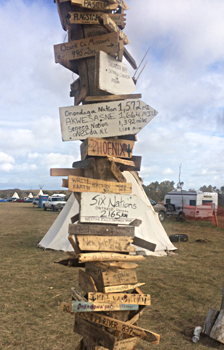
names to a post at Standing Rock.
I don’t know if there’s ever been any event, in at least a hundred years, with so many tribes. That’s how we protect the environment and protect our land in the place that creation began -- and in the eyes of many, where ancestors are buried and so forth.
And the second piece, of course, is the issue of justice. This small little tribe at Standing Rock has, when they looked at statistics, horrible statistics around substance abuse, suicides, all of this.
And so this hopelessness, this looking ahead to the future not knowing if you have a future, that is not unusual for Indian country. Someone has to be up there to send some message of self-worth.
So that’s another piece, the pride of being whatever tribe you happen to be -- for them, the Standing Rock Sioux Lakota people. They don’t have much, but they’re very, very proud of who they are, knowing that’s who God has created these people to be.
And that’s important to me, to always confirm that this is who God has created you to be.
Q: And as a Christian, how do you see your engagement with the Standing Rock issue?
It’s an important piece of social justice. It’s that sense of justice that we as Christian people are called to be about. It’s not just the native people; it’s injustice anywhere. And we see it every day in the lives of all kinds of folks everywhere.
Justice is the first piece of the Micah 6:8 [vision] -- “What does the Lord require of you but to do justice …?”
Q: So the act of protest helped reinforce the sense of identity, or of power?
Yes, because of this common element of protecting the water. Water is not just important for our life, how we live, but for ceremonial use. We understand the sacredness of water around the world. Indigenous people around the world know that.
And so this one issue of water and land brought people together, despite their differences, because it gave folk a common cause. And young people were coming from everywhere, because it gave them a sense of pride, saying, “We want to be a part of this, protecting the environment, and being proud of who we are as a native people.”
Q: Were people deflated when the camp was disbanded?
Folks were deflated, but the leadership is still on it. They’re raising awareness about the environment and about land and about water, still in a very prayerful mode.
For instance, some of these people went on to Flint, Michigan, to help with their water crisis. In Minneapolis, Michigan, California -- there’s a small group of folks who have been involved with this, native and nonnative, who are going to lend their support to other areas across the country.
The biggest piece probably has been to defund the pipeline. That’s where they’re still making a difference.
When you travel up there as an outsider, oh my gosh, you see how people are treated. You read about them every day in the paper, and hear the comments people make in hotels and airports. You see it in Standing Rock -- I mean, the racism that’s a part of the lives of the people there -- it’s very evident. And folks knew that.
But they are still holding up the hope for the next Standing Rock.


